Mesozoic basins and associated palaeogeographic evolution in North China
Yong-Qing Liu, Hong-Wei Kuang, Nan Peng, Huan Xu, Peng Zhang,Neng-Sheng Wang, Wei An
Institute of Geology, Chinese Academy of Geological Sciences, Beijing 100037, China
Abstract In North China, the Mesozoic terrestrial basins, sedimentary palaeogeography and tectonic settings involved five evolutionary stages: (1) the Early-Middle Triassic, (2) the Late Triassic to Early-Middle Jurassic, (3) the Late Jurassic to early Early Cretaceous, (4) the middle-late Early Cretaceous and (5) the Late Cretaceous. The regional punctuated tectonic events occurred during these evolutionary stages.During the Early-Middle Triassic (stage 1), the Xingmeng Orogenic Belt (XMOB, i.e., eastern part of Central Asia Orogenic Belt, CAOB) of the northern North China was settled in the transition of tectonic environment from syn-orogenic compression to post-orogenic extension with intensive uplifting. It is a main provenance in the unified Ordos-North China Basin.The united continental plate of China and the Qinling-Dabie-Sulu Orogenic Belt formed due to convergence and collision between the North China Plate and the Yangtze Plate along two suture zones of the Mianlue and the Shangdan in the terminal Middle Triassic.During the Late Triassic to the Early-Middle Jurassic (stage 2), the Late Triassic mafic or alkaline rocks and intrusions occurred on the northern and southern margins of North China Craton (NCC) and XMOB, implying that intensified extension happened all over the North China (early phase of stage 2). Additionally, in the late phase of stage 2, the basic volcanicfilling faulted basins were widely distributed in the northeastern North China during the Early-Middle Jurassic, including a series of small- to medium-sized basins with coal-bearing strata and some volcanic rocks in other areas of North China, which was the result of subduction of the Palaeo-Pacific Plate during the Early-Middle Jurassic. An active continental margin with accretionary complex developed in the eastern Heilongjiang of China, Japan and the Far East of Russia at that time. However, in the end of the Early-Middle Jurassic, because of the Yanshanian orogeny characterized by complicated thrust and fold, the previous unified Ordos-North China Basin was separated by the northeast-oriented Great Xing’an Range and Taihang Mountain uplifted linearment. The differential evolution of basins and sedimentary palaeogeography between eastern and western North China was initiated, and was interpreted to result in the closure of Okhotsk Ocean and the subduction of Palaeo-Pacific Plate (late stage 2).During the Late Jurassic (the early phase of stage 3), a variety of faulted basins occurred in the Yanshan and Yinshan areas in the northeastern North China. In Yanshan area, basins were filled with thickened intermediate volcanic rocks and purple-red coarse-grained clastic rocks. In contrast, only thick layered sedimentary rocks with rare volcanic rocks developed in the Yinshan faulted basins, the Ordos Basin and basins in sourthern North China. XMOB was the main provenance of the Early Mesozoic basins in the North China, while the Ordos Basin and the Hefei Basin were partly supplied by the northern Qinling Orogenic Belt.During the Late Jurassic-early Early Cretaceous (the late phase of stage 3), the northern and northeastern North China experienced extensional movement after the subduction of the Palaeo-Pacific Plate, the closure of the Mongolia-Okhotsk Ocean and the subsequent Yanshanian orogeny. At the same time, a NE-oriented, giant rift basin system (NE Asia Rift)extended from the Yanshan to the western Great Xing’an Range, where rift basins were filled with the regional, NE-oriented, thick coarse-grained clastic rocks and a belt of volcanic rocks.In the meantime, the eastern and northeastern China and most areas of NCC were presented as highland terrains.During the middle-late Early Cretaceous (stage 4), rift basins developed and accumulated alluvial sediments and interbedded alkaline volcanic rocks in the western and northern North China, including Yingen, Ejinaqi and Erlian regions. Basins were formed on both sides of the Tan-Lu Fault Zone under a striking-slipping force. Furthermore, faulted basins developed in the Yishu Fault Zone of Shandong (central Tan-Lu Fault Zone) as well, where dinosaur fauna flourished. Basic volcanic rocks and fluvial-lacustrine sediments were deposited in small- or medium-sized rift basins in the northeastern China. The Songliao Basin was a typical giant basin that was mainly filled with late Early Cretaceous lacustrine sediments. A group of rift basins occurred in the Sanjiang area, central Heilongjiang Province, northeastern China.From the middle-late Early Cretaceous to the Late Cretaceous (stage 5), depositional and subsiding center of the basins constantly shifted southeastwards in Heilongjiang Province.The tectonic setting changed into the Palaeo-Pacific continental margin in north and northeastern China.Besides, during the Late Mesozoic, a huge terrestrial biota, mainly dinosaur fauna, dominated in North China. The Yanliao biota of the Middle-Late Jurassic and the Jehol biota of the Early Cretaceous are characterized by feathered dinosaurs, primitive birds, mammals,pterosaur, insects and plants (angiosperms). In northeastern Asia, this Late Mesozoic tectonic background , palaeogeoraphy and palaeoecology were shared by East China, Korean Peninsula, Japan and the Far East of Russia.
Key words Mesozoic, basin, orogenic belt, tectonic zone, palaeogeography, North China
1 Introduction
The Mesozoic is an important period in the evolution?ary history of the Earth which was partially covered by the broad Tethys Ocean (the Tethys domain) and widely distributed terrestrial basins. Since the Late Mesozoic, a number of important geological events had taken place in the Tethys domain, such as Pangea break?up (Keppieet al.,2004; Veevers, 2004), Tethys closure (Sone and Metcalfe,2008), the formation of Mongolia-Okhotsk tectonic zone in Central Asia Orogenic Belt (Metelkinet al., 2007; Peiet al., 2011; Donskayaet al., 2013) and the Pacific Ocean ex?pansion (Kemkin, 2008; Chough and Sohn, 2010; Zhanget al., 2012a). Simultaneously, in terrestrial environments,a series of important geological/tectonic events with glob?al?scale implications occurred successively, for example,the extension of Circum Pacific Orogenic Belt from North and South America to the northeastern Asia, subduction of the Palaeo-Pacific Plate, the closure of the Mongolia-Okhotsk Ocean and its subsequent orogeny, the occur?rence of Yanshanian Orogeny in the intra?plate of North China (Daviset al., 2001; Yanget al., 2006), large?scale volcanic activities and mineralizations in eastern China(Xuet al., 2013) and the destruction of the North China Craton (NCC) (Zhaiet al., 2007; Liet al., 2012a; Zhanget al., 2012b; Zhuet al., 2012a, 2012b; Tanget al., 2013).
Then, extensive volcanic-magmatic-orogenic activities in the Mesozoic terrestrial environments of North China re?sulted in the complex and diverse palaeogeography, along with a rapid evolution of flourishing flora and fauna. For example, dinosaur fauna was a dominant creature which lived through the fast radiation during the Late Mesozoic and the mass extinction during the Late Cretaceous (Zhouet al., 2003). Therefore, the Late Mesozoic of North China had important implications on terrestrial palaeogeography,palaeoclimatology and palaeoenvironment, as well as the complicated global tectonic background, which has been a research focus for long?term.
In recent years, the authors, supported by the National Science Foundation of China and China Geological Survey,carried out systematic investigations and comprehensive studies of sedimentary-tectonic evolution and associated palaeogeography, focusing on the Mesozoic sedimentary basins in North China. Based on the tectonic evolution stages of the Mesozoic basins, this paper analyzed and summarized not only the spatial?temporal evolution of the Mesozoic terrestrial palaeogeography and palaeoenviron?ment, but also the tectonic activities in North China.
2 Geological setting
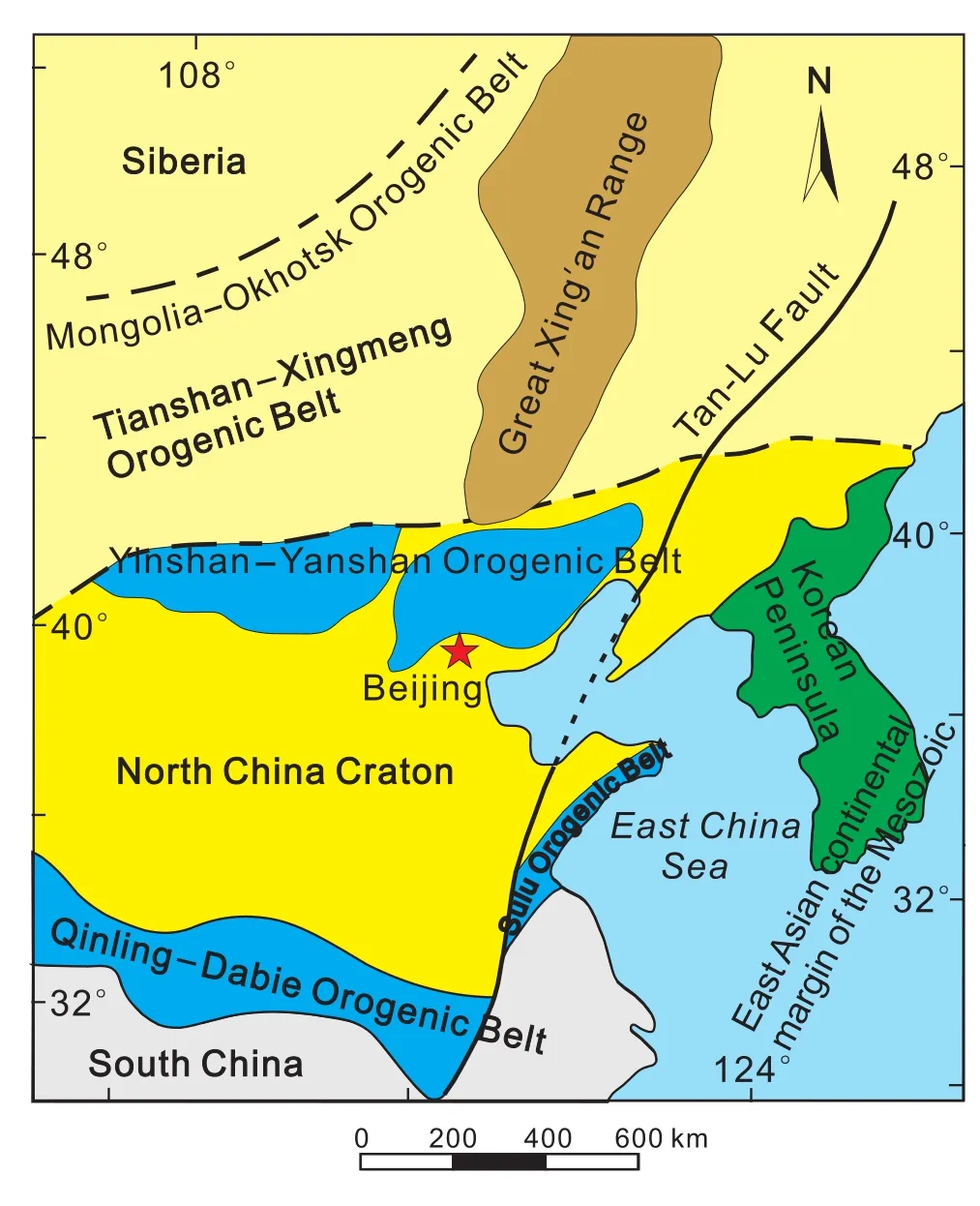
Figure 1 A schematic map of the Mesozoic tectonics in North China.
North China includes the Tianshan-Xingmeng Oro?genic Belt to the north, the North China Craton (NCC) to the south and the East Asian continental margin (Figures 1,2). The Tianshan-Xingmeng Orogenic Belt, which expe?rienced a long?term accretive arc-continent collision with a similar orogenic history as the Tethyan tectonic domain,was the world’s largest Paleozoic accretive orogenic belt,and formed at about 250 Ma along the Solonker suture(Xiao, 2004, 2009, 2013; Liet al., 2006). The Mongolia-Okhotsk Ocean closed during the Jurassic-Cretaceous(Donskayaet al., 2013; Zhou and Wilde, 2013) (Figure 1).The NCC, as one of the world’s oldest cratons, was finally cratonized inca.1.85 Ga, and then experienced extension during the Late Paleoproterozoic, stabilizing as a platform during the Middle Neoproterozoic (Zhaiet al., 2000; Zhenget al., 2013), receiving marine sediments during the Paleozoic, having depositional hiatus from the Middle Ordovician to the Carboniferous, and accumu?lating terrestrial deposits since the Permian. The Tan?Lu Fault Zone crosses the eastern part of NCC and the Jilin-Heilongjiang Provinces (Figure 1).
The southeastern region of NCC hosted the Qinling-Dabie-Sulu Orogenic Belts which were formed by col?lisions of South China Block and North China Craton during the Early Mesozoic and were symbolized the Pale?ozoic-Mesozoic continental collision and ultra high pres?sure (UHP) metamorphism (Zhanget al., 2004; Zhenget al., 2013). The southwestern region of NCC contained the Qilian Orogenic Belt that recorded the closure of Tethys Ocean (Zhanget al., 2004). The eastern region of NCC belonged to the continental margin of East Asia, which not only was the eastern edge of the Palaeo-Pacific Plate since the Mesozoic, but also constituted the complex tec?tonic setting of the Palaeo-Asia and northwestern Pacific Ocean since the Paleozoic (Li, 2006; Zhenget al., 2013).The eastern part of present Heilongjiang was located in the active continental margin of the Palaeo-Pacific subduction zone during the Late Jurassic (Kojima, 1989; Kirillova,2003; Kemkin, 2008).
3 Mesozoic basin evolution, palaeogeography, and tectonics in North China
Mesozoic basins were widely distributed in North China(Figures 2, 3). On the basis of sedimentary palaeogeogra?phy and tectonic settings, five evolutionary stages can be identified in chronological order,i.e., (1) Early-Middle Tri?assic, (2) Late Triassic to Early-Middle Jurassic, (3) Late Jurassic to early Early Cretaceous, (4) middle-late Early Cretaceous and (5) Late Cretaceous. Between each indi?vidual evolutionary stage, there were regional punctuated tectonic deformation (event) surfaces (Figure 3).
3.1 Stage 1: Early-Middle Triassic
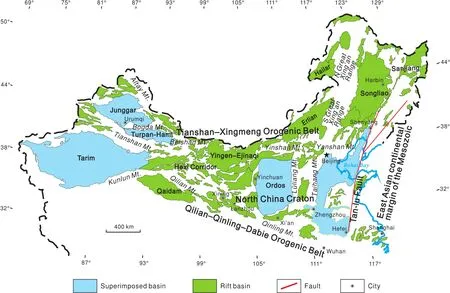
Figure 2 Distribution map of the Mesozoic basins in North China. Mt. = Mountain; the same below.
During stage 1 (Figure 4), the North China was char?acterized by differentiated palaeogeographic and tectonic evolution from south to north. The Junggar-Turpan?Hami area was a unified basin located in northwestern China in the Early Trassic, which was under the distance effection of the Tethys evolution in Qinghai-Tibet Plateau and the northward compression. The uplifted mountains around the basin are provenance and result in the purple-red fluviallacustrine sediments of the Early Trassic.
North China was in a syn?orogenic or post?orogenic tec?tonic setting,e.g., the Tianshan-Xingmeng accretionary orogeny or Central Asian Orogeny through the Late Paleo?zoic to Early Triassic. The northern margin of NCC and the Xingmeng Orogenic Belt were strongly compressed which demonstrated the syn?orogenic and uplift tectonic features.The Ordos-North China was represented by a giant ba?sin with widely?distributed facies assemblages of alluvial fan-fluvial and shallow lake facies. In Yanshan region, the Lower-Middle Trassic was dominated by alluvial fan and fluvial channel deposits of purple-red sandstone and mud sediments, which were deposited in western Shandong as well. In southern North China and northern Qinling Moun?tain, however, the Lower-Middle Triassic was dominated by alluvial fan-fluvial and shallow-deep lacustrine facies assemblages. During the Early-Middle Triassic, the North China Plate and the Yangtze Plate approached together and by the end of the Middle Triassic, collision between the North China Plate and the Yangtze Plate occured along the Qinling-Dabie-Sulu subduction belt, which caused uplift and extensive erosion in the southeastern region of North China and palaeogeographic rising of the southeast?ern North China. At that time, palaeogeographic highlands were widely distributed in eastern and northeastern China,and in Xingmeng Orogenic Belt (XMOB). Hence, most areas of XMOB and northeastern China were represented by the palaeogeographic highlands, which consisted of the main provenance of Ordos-North China Basin (Liet al., 2013a, 2013b; Yanget al., 2013). Palaeo?currents and provenances including detrital zircon analysis of the Low?er-Middle Triassic sediments indicated a bidirectional sedimentary supply pattern from either northern Qinling Mountain or XMOB and northern North China to the cen?tral Ordos-North China Basin (Figure 4).
3.2 Stage 2: Late Triassic to Early-Middle Jurassic
The stage 2 (Figures 5, 6) is characterized by most in?tense regional extension in North China in the previous uplift terrains. In the northern area of the northeastern and eastern China, highlands collapsed successively. In the XMOB and the northern margin of NCC, during the Late Triassic, volcanic lavas or alkaline rocks appeared (Xuet al., 2009, 2013) with small?scale basins that contained coarse?grained clastics and coal?bearing beds. Two giant basin systems of the Junggar-Turpan?Hami and the Or?dos-North China presented, where regional well?correlat?ed fluvial-lacustrine deposits were accumulated (Figure 5).
During the Early-Middle Jurassic (Figure 6), North China was characterized by the extensive streching of the Earth crust. A series of faulted basins filled with basicintermediate volcanic rocks and coal?beds developed well in North China and northeastern China. Across the Junggar-Turpan?Hami Basin in northwestern China, and in the western areas of the gravity gradient zone from the Great Xing’an Range to the Taihang Mountain, there de?posited thick coal-bearing lacustrine and fluvial sediments,however, the dominant deposits of the eastern areas were basic-intermediate lavas at bottom overlied by lacustrine and coal-bearing fluvial sediments. Besides, the ringlike depositional facies zones consisting of coarse?grained sediments of fluvial fans and channels surrounded in the Hexi Corridor Basin and the Ordos-North China Basin,and the palaeocurrents towards the central Ordos-North China Basin, suggested that their sediment provenances were the uplift mountains around these basins. But, palae?ocurrent and provenance analysis of the Jurassic deposits in West Shandong Province showed that these sediments came from East Shandong to the East Tan?Lu Fault Zone and northern North China or Central Asia Orogenic Belt(Yanget al., 2013).
Furthermore, during the late Early-Middle Jurassic, the Yanshanian orogeny characterized by complicated thrusts and folds was widely developed in North China (Daviset al., 2001; Copeet al., 2007), which led to a differential basin evolution in western and eastern regions of North China. Thus, the previously unified Ordos-North China Basin was split into two sub?basins (the Ordos Basin and the North China Basin) due to synchronous uplift along the NE?oriented line from the Great Xing’an Range to Taihang Mountain (the gravity gradient zone) which was effected and formed by Palaeo-Pacific Ocean subduction from the Early-Middle Jurassic. However, Xu (2007) indicated that this gravity gradient zone was caused by the subduc?tion of the Palaeo-Pacific Ocean Plate in the middle Early Cretaceous.
Thus, the differential evolution of basins and sedimen?tary palaeogeography between the eastern and western North China has initiated since the Early-Middle Jurassic.In fact, the eastern Heilongjiang Province located in the northeastern side of NE China was in a back?arc setting of the Palaeo-Pacific Ocean subduction under the East Asia Continent (Wu, 2007). Basin evolution, palaeogeography and dynamic mechanism of the Early-Middle Jurassic in northern North China and northeastern China were associ?ated with the closure of the Okhotsk Ocean as well. There?fore, current researches suggest that the northern North China and northeastern China were in a back?arc environ?ment of composite subduction of the Palaeo-Pacific Plate and the Okhotsk oceanic plate during the Early-Middle Jurassic (Xuet al., 2013; Safonova and Santosh, 2014).Hence, rising of the gravity gradient zone from Great Xing’an Range to Taihang Mountain is not only an indica?tor of beginning differentiated the palaeogeographic and tectonic evolution from east to west in North China, but also a crustal extension across the NCC in a large?scale and the maximum intensity. The Late Jurassic to the early Early Cretaceous strata were mainly volcanic-sedimen?tary assemblages and were characterized by bimodal?like volcanic rock associations. They rested on the unconform?ity induced by the Middle Jurassic Yanshan Orogeny and consisted of, in an ascending order, basic-intermediate volcanic rocks of basalt, basaltic andesite, trachyandesite and andesite, interbedded with lacustrine deposits of the Yanliao Biota?bearing Tiaojishan Formation, huge thick coarse?grained sediments of a combination of alluvial fan-fluvial conglomerates and sandstones containing local intermediate-acidic volcanic or volcaniclastic rocks of the Tuchengzi Formation, and acidic lavas and volcaniclastic rock associations of dacite and rhyolite and pyroclastic rocks of the Zhangjiakou Formation (Figure 3). The vast middle Early Cretaceous rifting volcanic and sedimentary rocks containing the Jehol Biota of younger than 130 Ma overlied the Late Jurassic to the early Early Cretaceous volcanic-sedimentary strata.
3.3 Stage 3: Late Jurassic to early Early Cretaceous
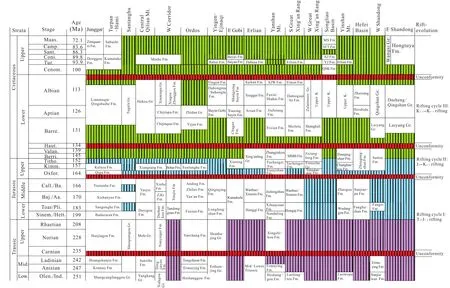
Figure 3 Stratigraphy andevolution stages of the Mesozoic basins in North China (vertical line areas refer to the missing strata). Fm. =Formation; Gr. =Group; MMB= Manketuoebo-Manitu-Baiyingaolao; MS =Mingshui; NJ =Neijiang; QSK= Qingshankou; SFT= Sifangtai; SJW = Sunjiawan; YJ =Yaojia; ZJG= Zhongjiangou.
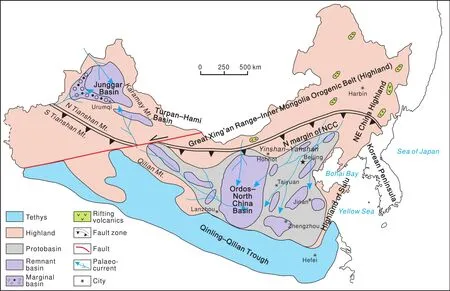
Figure 4 Basins and sedimentary palaeogeography of North China during the Early-Middle Triassic (stage 1).
During the early stage 3 (the middle Late Jurassic) (Fig?ure 7), a variety of faulted basins occupied the Yinshan-Yanshan areas because of regional extension. Faulted ba?sins in the Yanshan Mountain were filled with sedimentary succession of massive intermediate-basic volcanic rocks(the Tiaojishan Formation) and the overlying purple?red,coarse?grained clastic rocks (the Houcheng Formation/Tuchengzi Formation), which were not in co?occurrence with thrust faults regionally. Actually, through 154 Ma to 135 Ma,i.e., from the Late Jurassic to the early Early Creta?ceous, there was vast thick purple?red coarse-fine-grained clastic deposits in North China. The Shishugou or Wuchai?wan Group in northern Xinjiang, NW China was both pur?ple?red tuffaceous clastics with plenty of intercalations of conglomerates (165-164 Ma). Rare tuffaceous sediments except for purple?red coarse-fine-grained clastic depos?its occurred in Gansu and Ningxia provinces, NW China.Faulted basins in the Yinshan Mountain were mainly filled with thick?layered alluvial-fluvial-lacustrine clastic sedi?ments interbedded with freshwater limestone locally (Liet al., 2004). On the other hand, the Ordos Basin was filled with thick lacustrine-fluvial-alluvial fan deposits and fre?quent volcanic rocks, while thick conglomerates (the Fen?fanghe Formation) consisting mainly of the Paleozoic or Triassic limestone dolomites and sedimentary rocks were deposited along the margin of the Ordos Basin.
However, the eastern Heilongjiang located at the active continental margin of the Palaeo-Pacific Plate (Xuet al.,2013; Safonova and Santosh, 2014) was dominated by the accretionary complex and ocean plate stratigraphy which consisted of gabbro, diabase, basic pillow lavas (basalt,spilite) and siliceous rocks, or exotic limestone blocks of the Late Paleozoic.
During the late stage 3 (the late Late Jurassic to early Early Cretaceous) (Figure 7), a giant rift system appeared along the Yanshan Mountain to the western Great Xing’an Range in NE China, the lithology of which mainly consist?ed of basic-intermediate volcanic rocks, middle-coarse?grained clastic rocks (the Houcheng Formation/Tuchengzi Formation/Emuerhe Group), and acid volcanic rocks with sedimentary rocks at top (the Zhangjiakou Formation and its equivalent) (Wanget al., 2006; Zhanget al., 2008,2009, 2010, 2011; Yinget al., 2010).
Further, statistics of dating results of the Zhangjiakou Formation showed a minor discordant with previous re?sults (Wanget al., 2006; Zhanget al., 2008, 2010). Current study indicates that acidic volcanic peak of the Zhangjiak?ou Formation is not only in an interval of 165-130 Ma but also in two peak pulses of 160-150 Ma and 140-130 Ma rather than 160-150 Ma and 141-122 Ma (Zhanget al.,2010) or simply 135 Ma as previously published research results (Weiet al., 2012). However, dating results of vol?canism of the Zhangjiakou Formation suggest a 150-140 Ma weak peak being well consistent with the previous results (Zhanget al., 2010), which indicates the transfor?mation of the Palaeo-Pacific Plate subduction,i.e., from a low angle subduction to slab rollback through the Jurassic to the Early Cretaceous (Wanget al., 2006; Zhanget al.,2008, 2009, 2010; Yinget al., 2010).
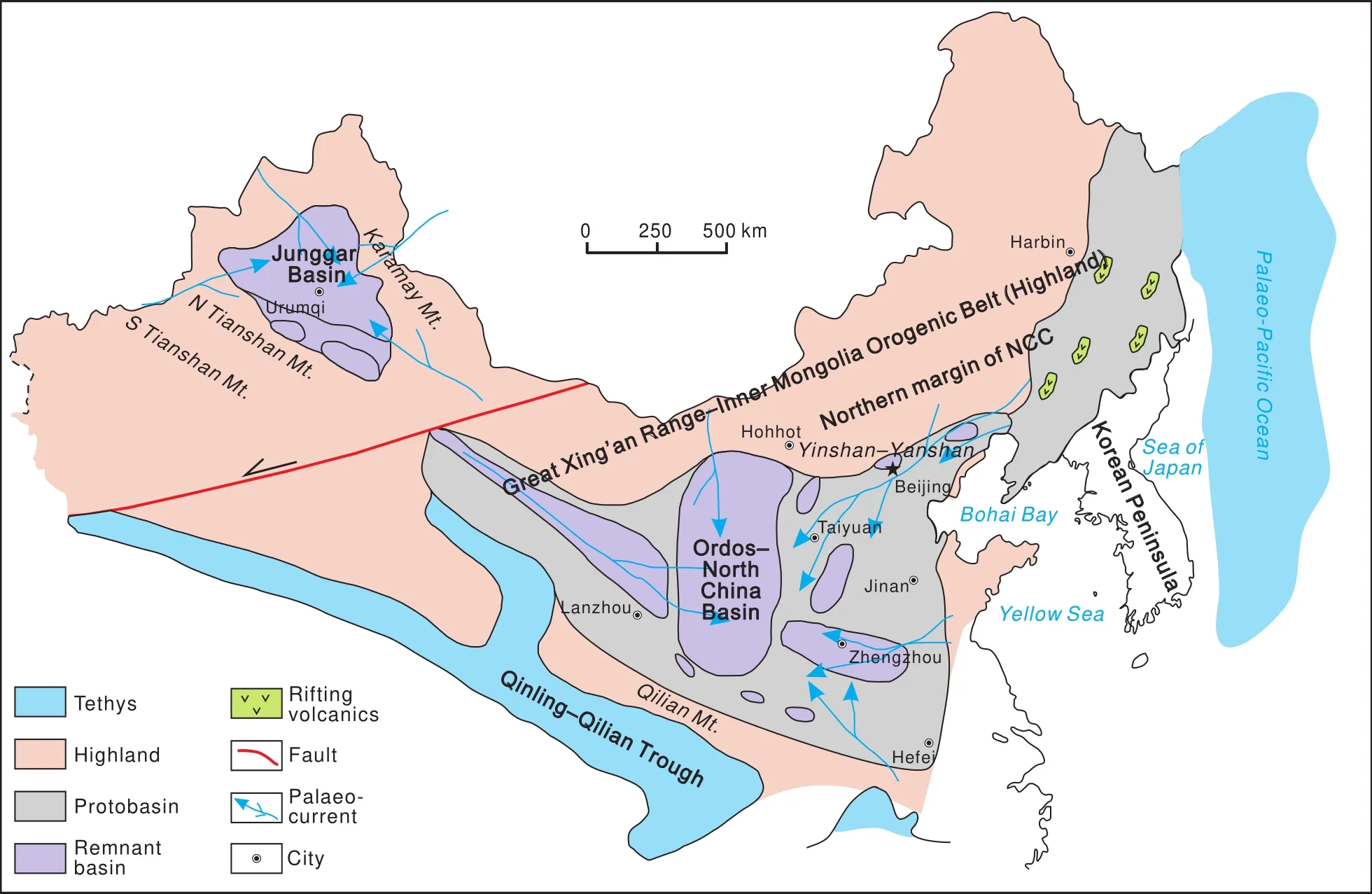
Figure 5 Basins and sedimentary palaeogeography of North China during the Late Triassic (early stage 2).
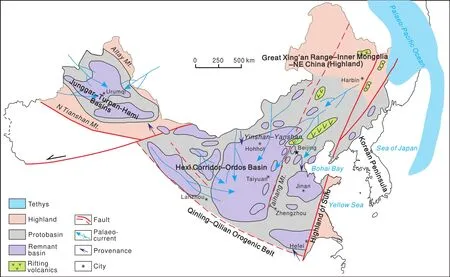
Figure 6 Basins and sedimentary palaeogeography of North China during the Early-Middle Jurassic (late stage 2). The previously unified Ordos-North China Basin was split into the two sub?basins of Ordos Basin and North China Basin during the late Early-Middle Jurassic.
Stratigraphic framework of Late Jurassic-early Early Cretaceous displays a regular variation from Yinshan-Yanshan Orogenic Belt to Great Xing’an Range, however,the Tiaojishan Formation is either missing or decreasing in thickness in western and northern Great Xing’an Range.On the contrary, the contemporary strata of the Tuchengzi Formation reaches a great depositional thickness in north?ern Great Xing’an Range. In southern Great Xing’an Range and Yinshan-Yanshan Orogenic Belt, both the Tiaojishan Formation and the Tuchengzi Formation present a huge thick succession. However, thickness of the Zhangjiakou Formation and its contemporary strata in the whole Great Xing’an Range and western Yinshan-Yanshan Orogenic Belt is larger than those somewhere in North China.
At the same time, most of the eastern region of North China, in spite of giant rift systems, was a palaeogeograph?ic highland named as the “East North China Highland”,which indicated a common geographic uplift and erosion.This study suggests that during stage 3, the regional tec?tonic setting, volcanics and magmas, sedimentary basins,and palaeogeographic evolution are not related to the com?posite subduction. In contrast, the North China was under post?orogenic extension which caused the collapse of the Mangolia-Okhotsk Orogenic Belt and the Yinshan-Yan?shan Orogenic Belt (Fanet al., 2003).
3.4 Stage 4: middle-late Early Cretaceous
Furthermore, in North China, after intensive thrust and fold events at the end of stage 3, widespread extension reached its peak during stage 4 (Figures 8, 9) correspond?ing to lithospheric thinning and destruction of the NCC(Zhuet al., 2012a, 2012b). In sedimentary basins, the volcanic-sedimentary deposits accumulated either uncon?formably or conformably on the previous orogenic belts.Those medium? or large?scale basins were common on XMOB, which were mainly filled with fluvial and lacus?trine deposits under hot and arid environments. Regional faulted basins with fluvial-lacustrine sediments and alka?line volcanic intercalations were, however, developed in the Beishan Mountain, Hexi Corridor, and Yingen-Ejina?qi areas in northwestern China and Erlian regions on the northern side of North China. But, rift basins filled with intermediate volcanic rocks which were interbedded with fluvial-lacustrine sediments containing well?preserved fossils of the Jehol Biota were widely developed in the northern and northeastern China, the Far East of Russia,Mongolia, South Korea and Japan (Zhouet al., 2003; Mat?sukawaet al., 2006; Figure 8).
At the same time, the Tan?Lu striking?slipping fault led to basin formation within fault zone (i.e., in Hefei, eastern and western Shandong, northeastern Songliao and the San?jiang Region). Typical pull-apart basins filled with thick volcanic-sedimentary rocks (the Qingshan and Dasheng Groups) appeared in the Yishu rift fault zone. Dinosaur bones and trace fossils were well preserved in shallow?lake sediments of the Dasheng Group. At that time, NE China was of the middle Early Cretaceous in age. Small? to middle-scale faulted basins were filled with basic volcan?ics and fluvial-lacustrine sediments. The Songliao Basin was a late Early Cretaceous giant lacustrine basin filled with deep?water lake (shale)-river facies sediments (Renet al., 2002; Fenget al., 2010; Liet al., 2012b). Rift basins of the middle-late Early Cretaceous were characterized by marine-terrigenous sediments and interbedded with calc?alkaline volcanic rocks in Sanjiang Region as well. Here,the river system connected with the Palaeo-Pacific Ocean and palaeoclimate was mainly warm and humid (Sha,2007; Figure 9).
3.5 Stage 5: Late Cretaceous
During stage 5 (the Late Cretaceous), a series of broad basins with fluvial to shallow lacustrine facies occurred in the Hexi Corridor, including the Yingen-Ejinaqi Ba?sin which was located in NW China and the Erlian Basin which was located in the northern region of North China(Figure 10). The Songliao Basin and the Sanjiang faulted(rift) basin groups continued their spreading. At this pe?riod, basins and palaeogeography of North China and its northeastern region were obviously effected by the strik?ing?slipping movement of the Tan?Lu Fault.
Actually, since the Late Mesozoic, from the western side of Great Xing’an Range through the Songliao Basin to the Sanjiang Region of Heilongjiang, sedimentary basins distributed gradually towards the southeast of NE China,which reflected the influence of the Palaeo-Pacific conti?nental margin evolution (Wanget al., 2006). In addition,during the Late Mesozoic, terrestrial biota represented by flourishing dinosaur fauna prevailed in North China and the North-East Asia, including the Middle-Late Jurassic Yanliao Biota and the middle-late Early Cretaceous Je?hol Biota characterized by terrestrial plants and animals,feathered dinosaurs, primitive birds, mammals, insects,and angiosperms (Zhouet al., 2003; Liuet al., 2012).
In general, during the Late Mesozoic, the eastern China and the northeastern Asia, South Korea, Japan and the Far East of Russia all shared the same tectonic, palaeogeo?graphic and palaeoecological environments, which was habitable for terrestrial vertebrate and invertebrate faunas and floras (Matsukawaet al., 2006).
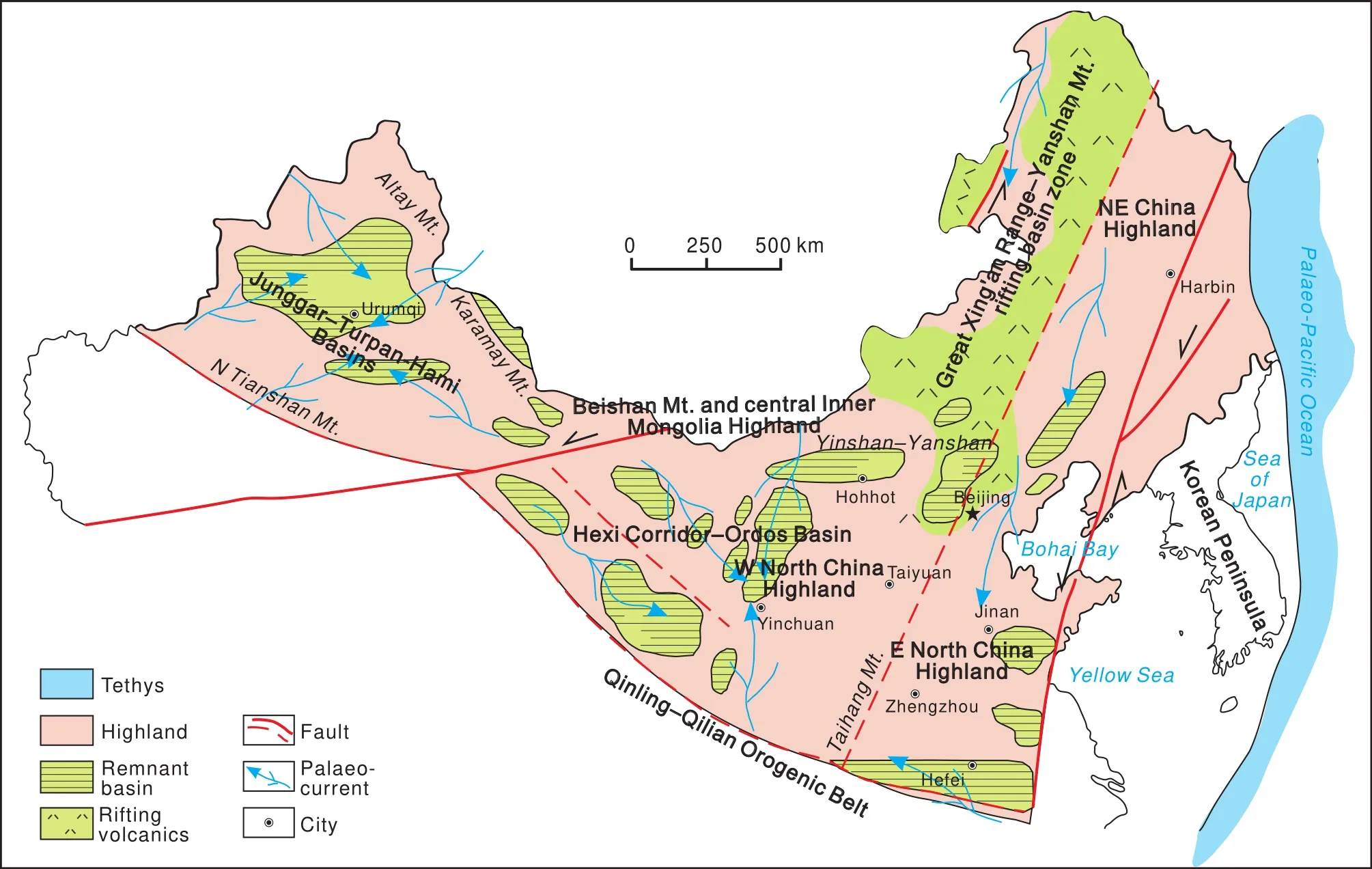
Figure 7 Basins and sedimentary palaeogeography of North China from the Late Jurassic to the early Early Cretaceous (stage 3).
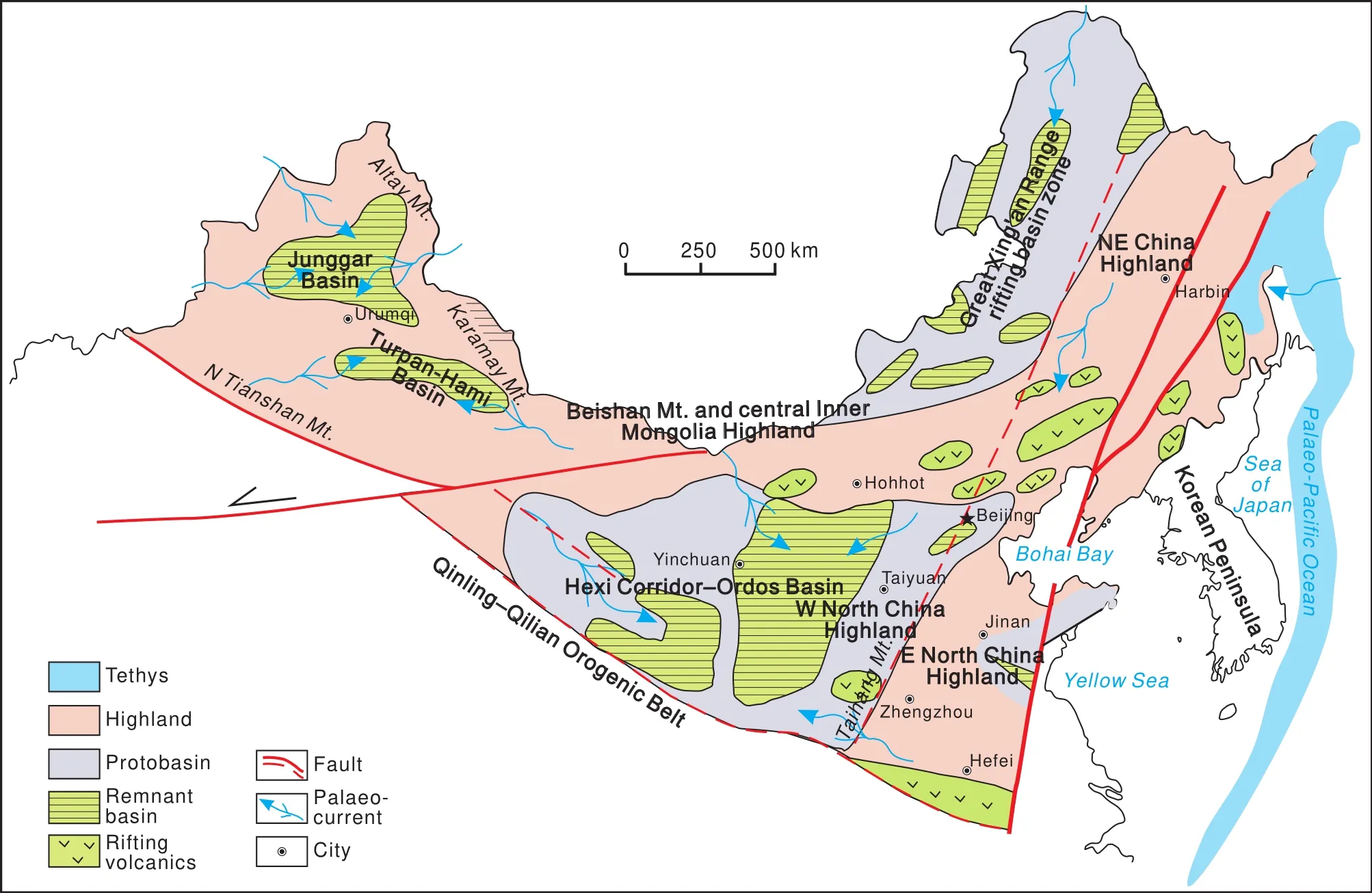
Figure 8 Basins and sedimentary palaeogeography of North China during the middle Early Cretaceous (early stage 4).

Figure 9 Basins and sedimentary palaeogeography of North China during the late Early Cretaceous (late stage 4).
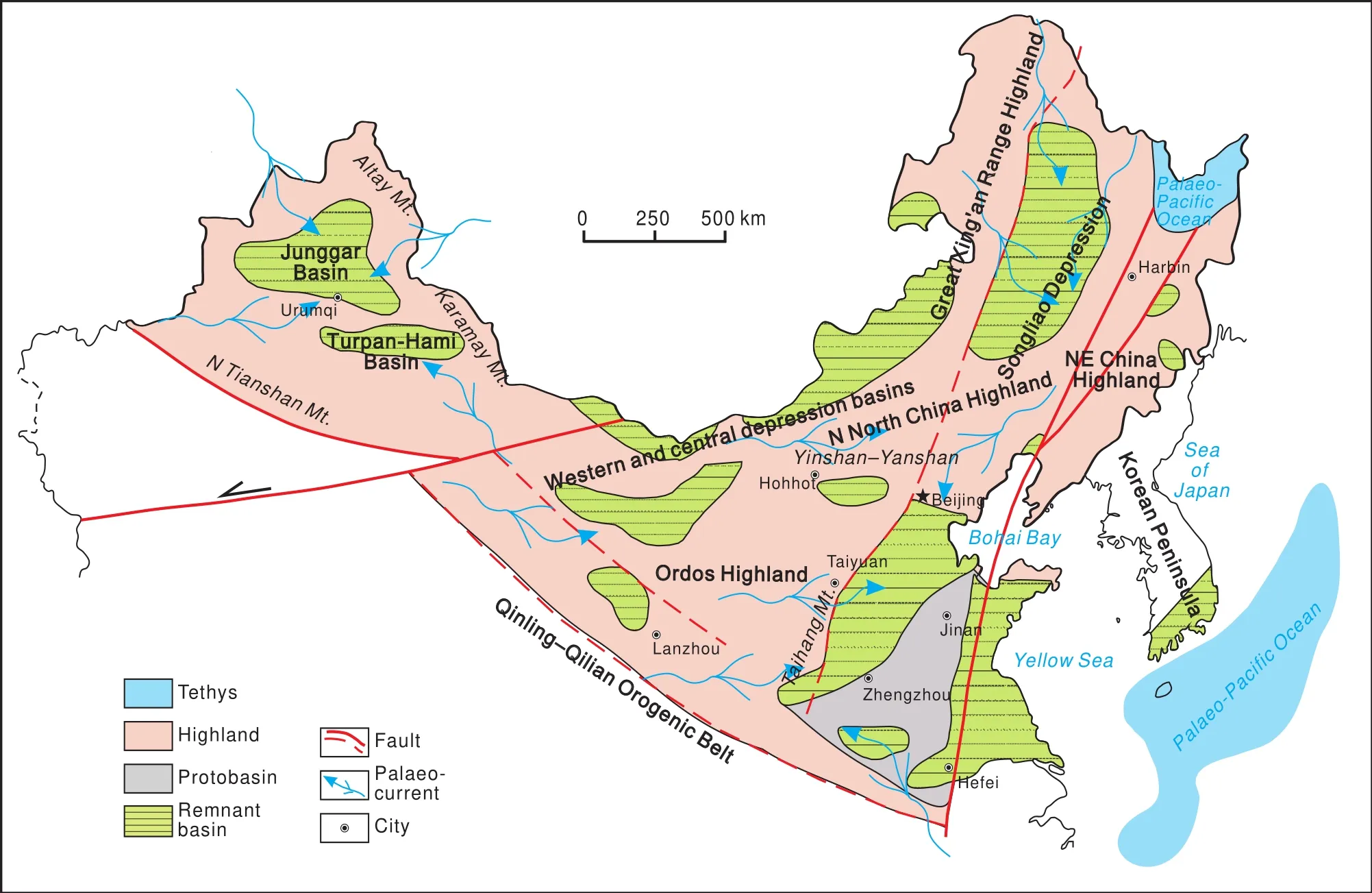
Figure 10 Basins and sedimentary palaeogeography of North China during the Late Cretaceous (stage 5).
4 Conclusions
In North China, terrestrial sedimentary palaeogeogra?phy and tectonic settings can be classified as five evolu?tionary stages for the Mesozoic basins. During the Early Mesozoic, the XMOB was in a post?orogenic setting;afterwards it was uplifted and supplied sediments to the Ordos-North China Basin.
Following the initial extension of the Middle Triassic,more intensive expansion and a series of faulted basins occurred during the period from the Late Trassic to the Early-Middle Jurassic. In addition, small?scale, basicintermediate volcanic rocks and clastic rocks associated with coal?bearing sediments were widely distributed in the northeastern region of North China at that period. How?ever, to the west, volcanic rock interclations were rare. An active continental margin with accretionary prism devel?oped on the eastern side of Heilongjiang due to subduction of the Palaeo-Pacific Plate.
At the end of the Early-Middle Jurassic, the Yansha?nian orogeny occurred, which was characterized by com?plicated thrusts and folds and led to differential basin evolutions and sedimentary palaeogeography between the eastern and western regions of North China.
During the transitional period of the Late Jurassic-Early Cretaceous, the northern and northeastern regions of North China were in an extensional tectonic setting ac?companied with vast collapse of both the Okhotsk Oro?genic Belt and the Yanshan tectonic belt. A tectonic zone which was filled with basic-acidic lavas, pyroclastic rocks and thick?layered, coarse?grained sediments related to the northeastern Asia rift system was extended from the Yan?shan Mountain to the Great Xing’an Range.
Furthermore, from the Middle to Late Cretaceous, rift?ing basins in North China developed regionally, especially along the Tan?Lu Fault Zone. The northeastern region of North China was characterized by the occurrence of the Songliao Basin and the Sanjiang Basin groups, both of which were in a lacustrine environment.
In addition, terrestrial biotas (i.e., the Yanliao Biota of the Middle-Late Jurassic) and the Jehol Biota of the middle-late Early Cretaceous (which mainly consists of feathered dinosaurs, primitive birds, mammals, reptiles,pterosaurs, insects and plants/angiosperms,etc.) dominat?ed in North China and northeastern Asia during the Late Mesozoic. At this period, the East China, Korean Penin?sula, Japan and the Far East of Russia shared same palaeo?geographic and palaeoecologic environments, which were habitable for terrestrial vertebrate and invertebrate faunas and floras.
Acknowledgements
We would like to thank Prof. Zeng?Zhao Feng, whose advice was invaluable and we also appreciate the editors for helpful comments in general. This project was support?ed by the National Natural Science Foundation of China(grants No. 41372109, 90914003 and 41272021), and the China Geology Survey (grants No. 1212011085477 and 12120114064301).
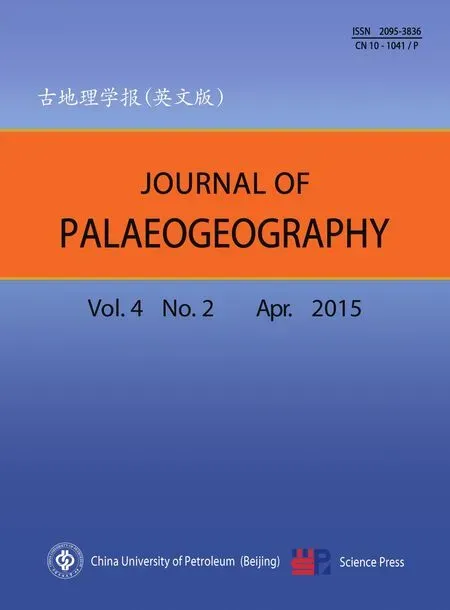 Journal of Palaeogeography2015年2期
Journal of Palaeogeography2015年2期
- Journal of Palaeogeography的其它文章
- Characterization and evolution of primary and secondary laterites in northwestern Bengal Basin,West Bengal, India
- Geodynamic evolution of the Earth over the Phanerozoic: Plate tectonic activity and palaeoclimatic indicators
- The landslide problem
- General regulations about submitting manuscripts to
- 2nd International Palaeo?geography Conference October 1013, 2015 Beijing, China First Circular
- Summary of the 1st Editorial Committee Meeting of Journal of Palaeogeography in 2015
